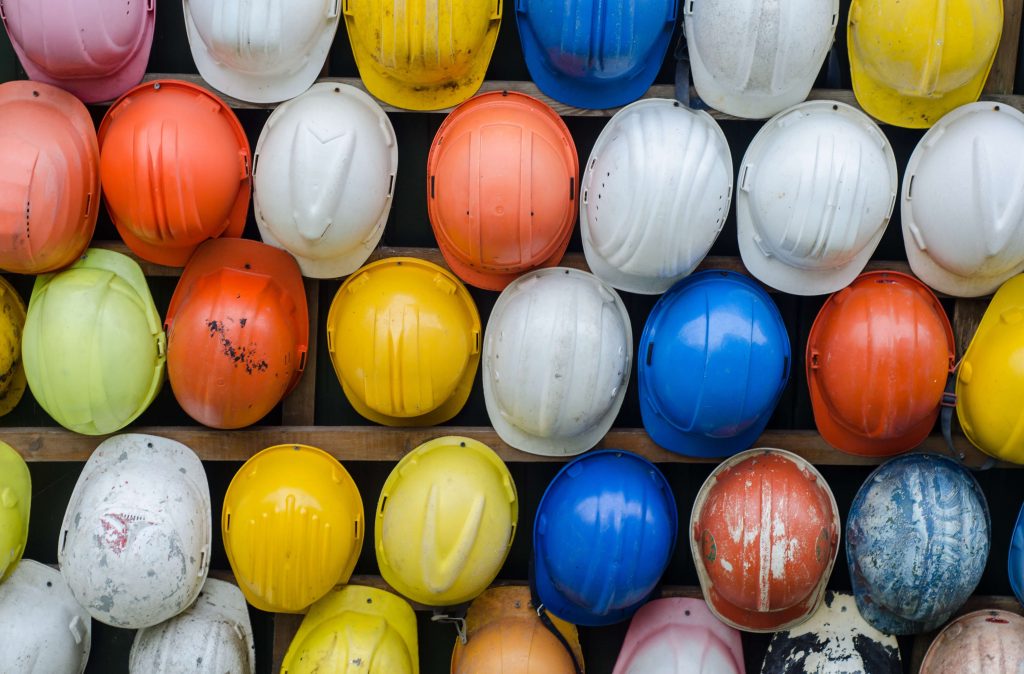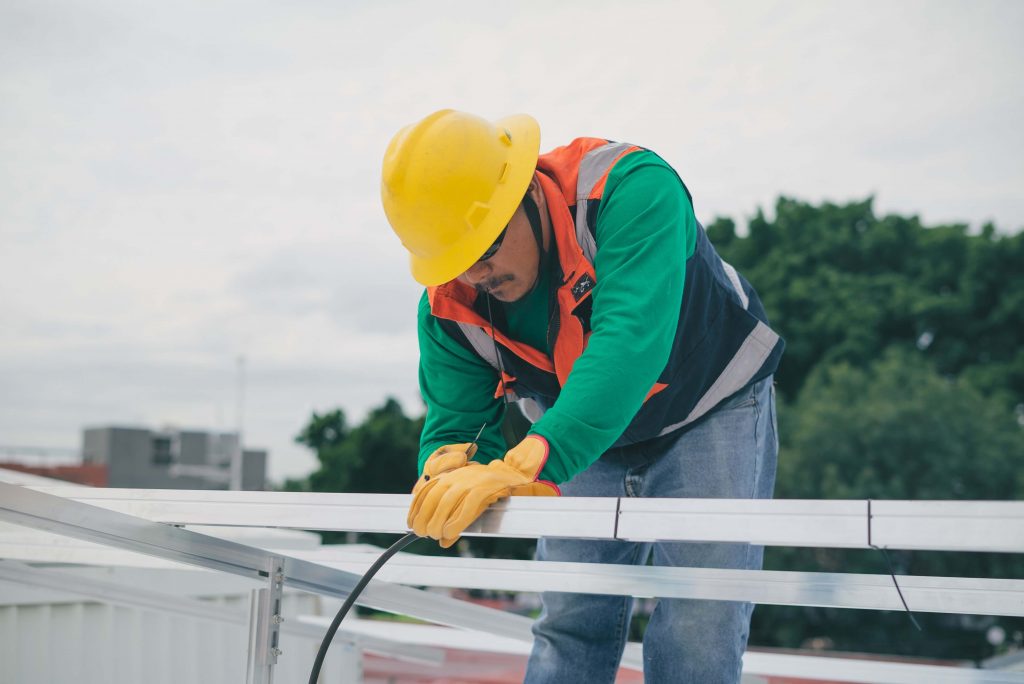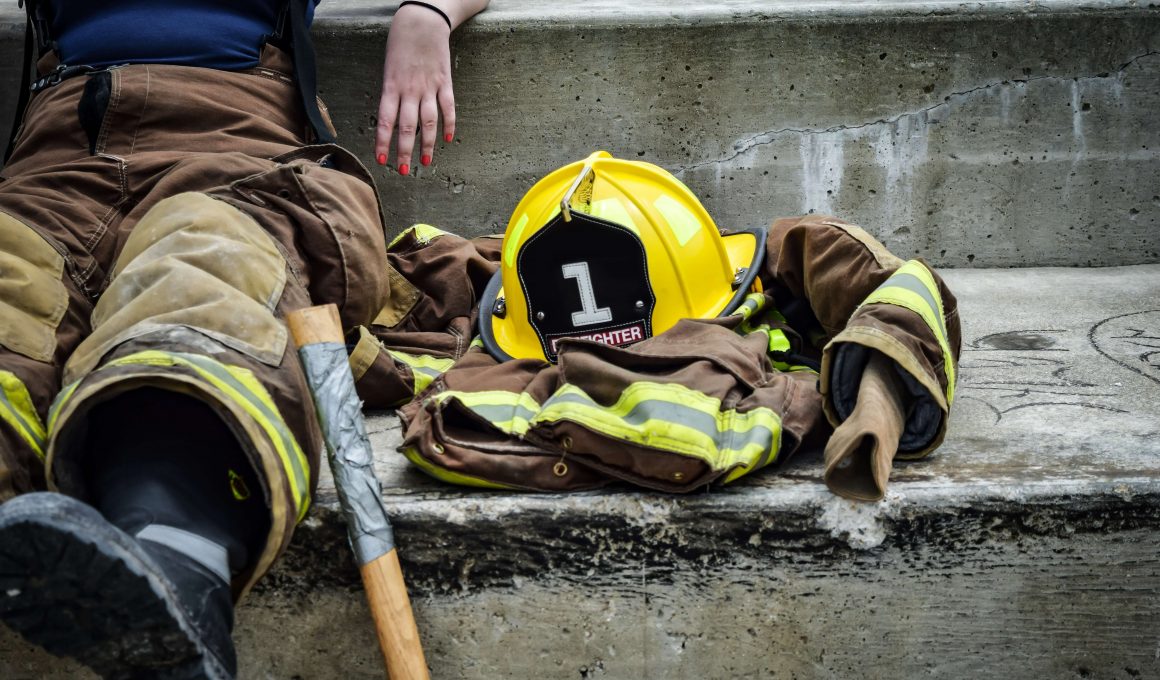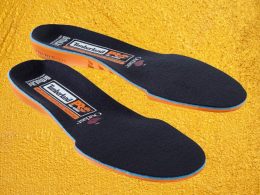Workwear Guru is reader-supported. When you buy through links on our site, we may earn an affiliate commission. Learn more
If you were to imagine a construction site, yellow hard hats would not be missing in the picture. Because of the bright color or the hard work they imply, hard hats are significant and not easy to forget. You might have heard that there are different types of hard hats with different colors, but did you know they go out of date? No matter how compelling this may sound, it is true. If you want to learn more about checking your hard hat expiry date, keep on reading.
History of Hard Hats
No matter where you work or what you do, workplace safety is essential for your overall well-being.
In the killing fields of Europe during World War I, death was of an apocalyptic magnitude. In an era of terrible trench warfare, the introduction of continuous-fire machine guns and sophisticated artillery with high-explosive rounds erased millions of lives.
The helmet was one saving grace. Bullets, shrapnel, and flying debris frequently grazed this tough cover, which kept the head and the soldiers secure. Because of the hefty headgear’s protection, many troops were allowed to return home to their families.
Edward W. Bullard, a young lieutenant in the United States Army’s cavalry, was the first to realize the helmet’s efficiency and understood its promise in postwar industrial society. Upon returning to his family firm in San Francisco in 1919, he began constructing peacetime safety headgears.
This canvas and leather headgear, the Hard-Boiled Hat, was the first commercially marketed head protection item. Bullard’s hard helmet, now worn by millions of employees, transformed the safety-product sector, earning him a place in the National Inventors Hall of Fame.
Hard hats types and classes

All workers must be aware of the many types of hard hats, how to care for them, and which ones are the most suitable for a particular job.
Most OSHA-approved hard helmets and ANSI Z89.1-compliant hard hats are made of high-density polyethylene (HDPE). If you peek inside a hard hat, you’ll discover what is known as suspension.
A suspension system has a few load-bearing points that keep the hard helmet from resting on the worker’s head, providing an excellent barrier against direct contact.
Apart from that, hard hat qualities begin to diverge in terms of protection. The type of hard helmet is the first method; hard hats are divided into distinct type groups.
TYPE I helmets are specifically designed to protect against falling items. Construction sites and other sites where work is done high above the earth frequently utilize this form of head protection. When working at high elevations, the risk of falling objects causing damage increases, so “Type 1” hard hats are required in these situations.
TYPE II hard hats offer protection from falling items and lateral impact. Running under a steel beam, bullets flying, or any other risk to the sides or back of the head could result in the use of type 2 hard hats.
Apart from the several types of hard helmets, there are various classifications of hard hats. Hard hats are classified based on the hazards. In many cases, having the correct hard hat class might mean the difference between life and death. Therefore, having the right option is critical.
Class G (General Hard Hats): Class G hard hats are usually the most accessible hard hats. This class of hard hats is firstly used to shield from impact risks. Although they provide some shielding from electricity, that is only up to 2200 volts.
Class E (Electrical Hats): Class E hard hats are approved for regular use in sites where vulnerability and electrical danger are highly possible. A hard hat must provide the person with insulator protection of as much as 20,000 volts to be classified as a Class E hard hat.
Class C (Conductive Hard Hats): Hard hats in the Class C category are not designed to protect against electrical risks. Instead, conductive hard hats are only meant to protect against impact risks. A class C hard hat will usually have built-in vents to keep the user cool, which is why they’re so common in hot factories and construction yards.
OSHA Standards & Requirements

Occupational Safety and Health Administration (OSHA) requires employees to wear hard hats when working in situations where there is a risk of head injury from impact, falling or flying items, or electrical shock and burns.
Among some standard interpretations, OSHA has two general standards to require wearing a hard hat:
- 29 CFR 1910.135 governs hard hat requirements for general industry workers
- 29 CFR 1926.100 refers to head protection requirements for construction, demolition, and renovation workers.
This implies that when there is a risk of head damage from “impacts, falling or flying items, or electrical shock,” both standards require workers to wear hard hats in the workplace.
A hard hat meets the OSHA requirements if head protection complies with ANSI Z89.1 standard of 1997, 2003, or 2009 editions of or gives either equivalent or greater protection.
Safety facts for hard hats
Although hard hats are crucial for personal protection and safety, unfortunately, the Bureau of Labor Statistics (BLS) shows that only 16% of workers who experienced head injuries wore hard hats, despite the fact that most of them were required to wear them. The same report shows that 95% of workers who wear hard hats during work are asked to do so by their employers.
It is essential to understand that a single head injury might cause fatality or affect a person’s life significantly. So, make sure to wear head protection in the workplace. Moreover, ensure that your hard hat fits you properly and is suitable for the actual working conditions.
How to take care of your hard hat?
A hard hat helps you protect yourself, but it also requires maintenance. To do so, you might start by cleaning it daily since this will extend its lifespan.
Inspect hard hats for any damage regularly and replace them as needed. Check for cracks and holes daily, and remember that paints, cleaning solvents, and UV light can degrade the hat’s surface and even its electrical resistance.
Hard helmets should be stored in a shady, well-ventilated environment. Hats can be damaged by the sun and high heat over time.
Labels and stickers should not be applied since they may cover cracks or other problems and ensure not to make holes in a hard helmet because this will compromise its ability to protect you.
Hard Hats Expiry Date

Interestingly enough, every hard hat has an expiry date. In many cases, manufacturers provide recommendations on the lifespan and how long hard hats can be used.
This varies depending on the type of hat, the manufacturer, and the amount of usage. However, if you want to learn more about how long hard hats are suitable for, how to read the expiry date, when is the right time to replace your hat, and what to do if your hat has already expired, read a few more rows.
How long are hard hats good for?
When hard hats have cracks, dents, penetration, or even wear from severe handling and treatment, you must consider the OSHA hard hat replacement criteria. Although there is no official OSHA hard hat expiration date, manufacturers may specify one. The majority of people change their hard hats every five years.
Although we should consider the circumstances, it is recommended that the shell be replaced at least every two to five years, depending on the work environment. Even hard hats with a five-year expiration date are recommended to be replaced as soon as two years under heavy use. Or for example, if it gets damaged, it should be replaced right away, even if it was issued on the same day.
How to read hard hat expiry date?
It would help if you first determined when and who created the hard hat to know the expiration date. The date code on the hat tells when it was produced. The following information is in the date codes molded into the hat shell: day, month, and year. The month is indicated by the huge arrow inside the “Month/Year” circle, and the year is shown by the two numerals inside that inner circle.
This date is usually stamped below the brim of the hard hat, so it will be easy to indicate it if you turn the hat over and look inside.
What if my hard hat has expired?
If your hard hat expires, it has served its purpose. After all, the manufacturer understands a lot more about the materials and construction of your hard hat than you do. So believe what they say and don’t go past the recommended expiration date. In this case, it is the perfect time to replace your hat.
When should I replace my hard hat?
It is suggested to check your hard hat after every use. Hard hats must be inspected after each usage for any damage that could render them useless and non-compliant. Hard hats should be squeezed with two hands, applying force, in addition to a visual inspection. If you hear squeaking or strange noises, this must be a sign that it is time to replace it.
Final Thoughts
Now that you know almost everything about hard hats, how to use them, types and classes, take care of them and even check their expiry date, you are ready to wear them.
And do not forget to make sure your hard hat is labeled with the manufacturer’s name, the date it was made, and the designation of type and class. If the hat does not have comprehensible and proper labeling, do not buy it, and please find one that does.











